It is usual that berry bushes can be planted with equal success in spring and autumn. Black currant, very popular among gardeners, is an unpretentious plant. Therefore, not everyone knows that this shrub prefers the autumn season. Planting currants in autumn at times increases the survival rate of seedlings. A stronger and stronger shrub will bring a rich and useful crop.
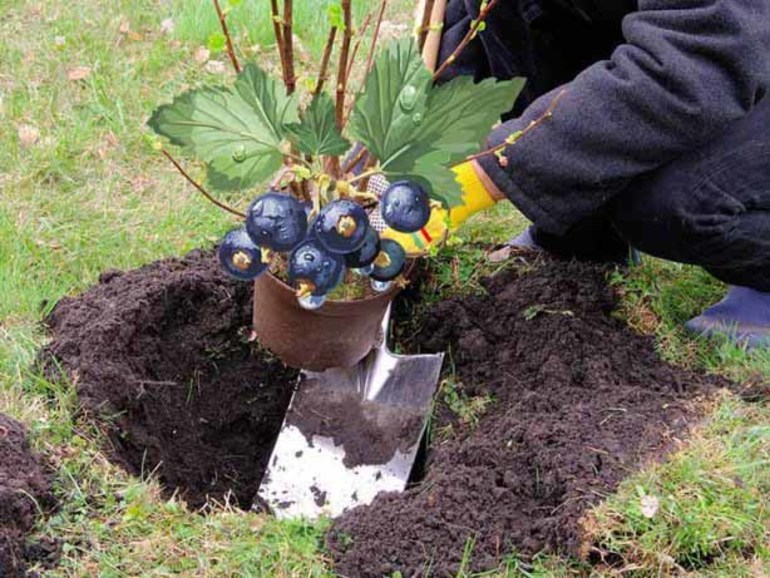
Content
Optimal time for landing
Currant, be it black, red, golden or white, is a very hardy and tenacious plant. But, in order to grow a healthy bush from a seedling, you need to observe the planting dates and know about the nuances of planting.
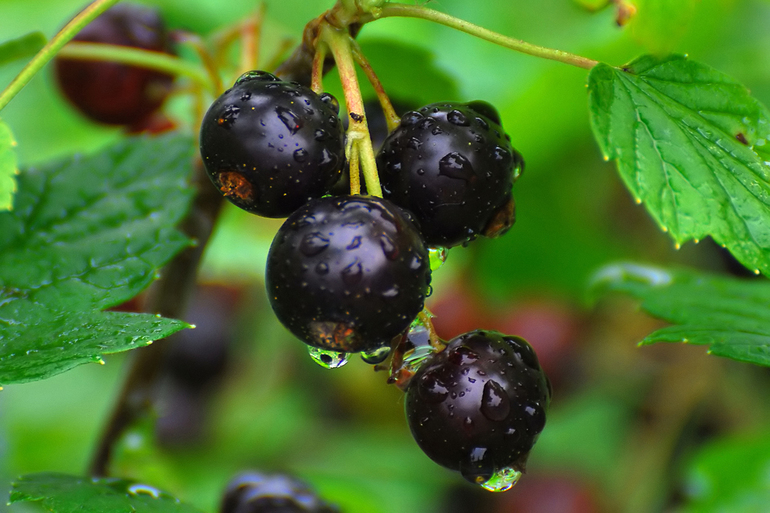
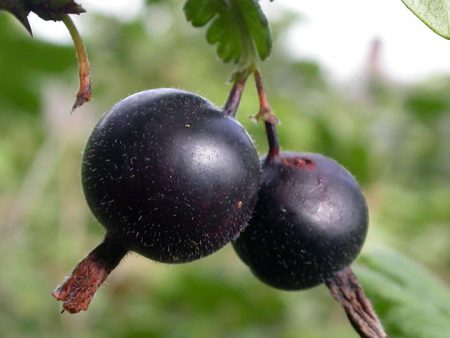 You may be interested in:
You may be interested in:Suitable season
Deciding when it is best to plant currants - in spring or autumn - is very simple. You just need to consider the differences in planting currants for each season:
Spring planting:
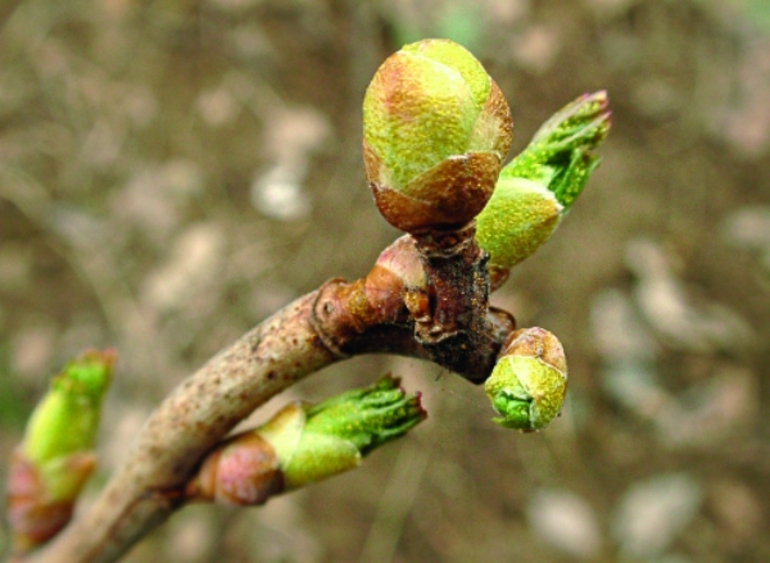
- It is necessary to take into account the peculiarity of the currant vegetation - its buds open too early, in most regions the earth has not yet warmed up. Therefore, such a landing is more successful in warm regions with little snow.
- The month of landing is the end of March, when the night temperature does not fall below 0 ° C. If repeated frosts are likely, then it is better to wait, but a maximum until the beginning of April. The plant should not enter the phase of active growth, so that the seedling gets time to root.
- It is impossible to delay planting, since a bush with blossoming buds is difficult to root.
- Day of landing needs to be selected especially. The temperature should be warm enough (+ 10 ... + 12 ° C) but not hot, and humidity should be high.
Planting blackcurrant in autumn has several advantages:

- Autumn is deprived of the spring race after time. There is a whole summer to choose a place for currants.
- Seedlings have already grown the root system, it is easy to choose the strongest and most healthy bush.
- Almost no care after planting - there is no need for frequent watering, fertilizers.
- The activity of harmful insects drops sharply in the fall.
- All the forces of the plant go not to the formation of leaves, but to the root system. This allows the currant to take root quickly and well. When it gets colder to about + 10 ° C and lower, the roots will rush deeper, the plant will become immune to unfavorable temperatures.
- By spring, the soil around the roots will be compacted to the right extent, and the seedling will actively grow, give good shoots.
- Currants wake up very early from hibernation. And the first berries of a two-year bush can give in the spring.
Best month
Experienced gardeners are the perfect month for planting currants - black, red, white - called September. The optimum temperature during planting should be at least 15 ° C.
But not everything is so simple: pretending in which month to plant currants in autumn, the climate of the region must be taken into account:

- the middle strip of Russia (Nizhny Novgorod, Lipetsk, Kostroma regions) - the period from September 25 to October 15;
- Moscow and Moscow Region - mid-September-early October;
- Leningrad Region - the last decade of September;
- Siberia and the Urals - August 24-September 10;
- southern regions, Astrakhan, Rostov regions, Krasnodar Territory - from October 10 to early November;
- Volga region - from the end of September to October 20;
- Ukraine - from mid-September to the end of October;
- Belarus - in October.
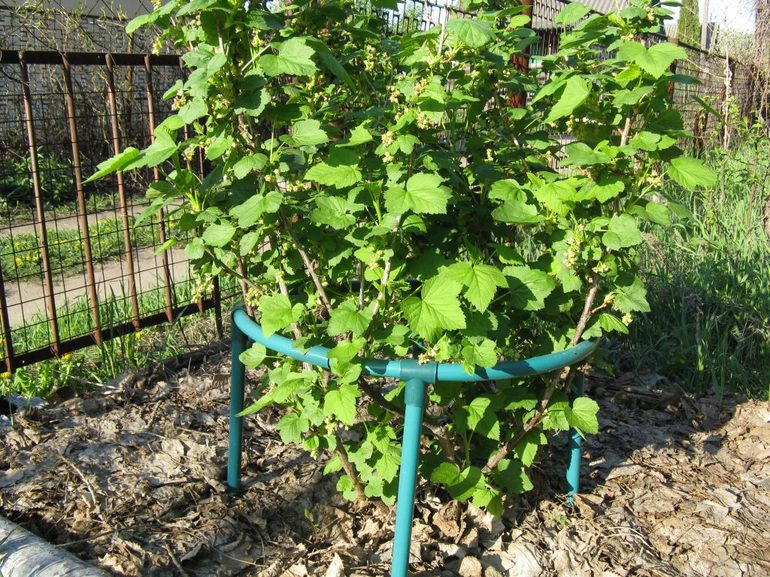
The correct planting period is determined based on the prevailing weather conditions in the region, forecasting frosts and the time it takes for a seedling or cuttings to take root, gain strength and winter.
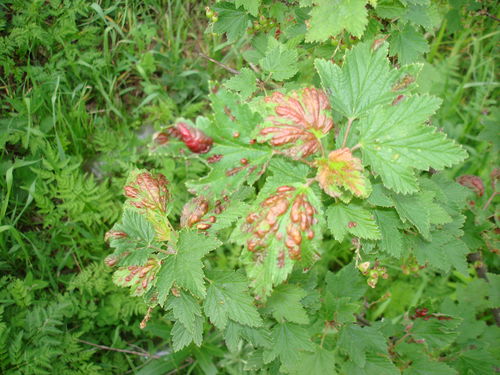 You may be interested in:
You may be interested in:Blackcurrant takes root within 16−20 days (red and white need 25 days). That is, the currant should be planted in autumn depending on the climate (2, 3 or 3.5 weeks before the freezing begins). After disembarkation, the temperature should be kept at 5 ° C for a long time.
Preparation for landing
Unpretentious currants can grow even without carefully creating good conditions for it. But it is unlikely that the bush will bring an abundant crop of large berries. Therefore, you need to know how to plant a plant in the fall, starting with the right choice of a place in the garden.
Site selection
Currant bush can actively bear fruit in one place from 15 to 20 years, and transplant does not tolerate well. Therefore, it is necessary to choose the most suitable place for the plant in the garden. Blackcurrant prefers well-lit places, but feels great in shaded areas. Loves moisture, but does not tolerate waterlogging of the soil.
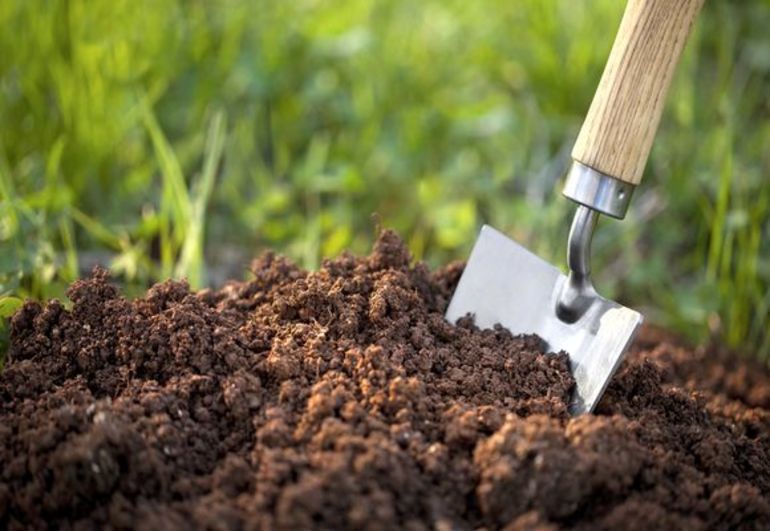
If the garden plot is located in a lowland, and groundwater is located close to the surface of the earth (less than 1 meter), then it is necessary to protect the currant from stagnation of water. This can be done using drainage of the soil, it is desirable to make a drainage structure that will remove excess moisture from the roots.
For currants, gentle slopes protected from the wind are good. If you plant it on an elevation, then its roots will often suffer from the cold, and in winter the wind will blow the snow cover warming the roots.
Currants prefer fertile or light, loose loamy soil with a slightly acidic or neutral pH level (about 6-6.5). It is advisable not to plant the plant in places where other currant bushes, gooseberries, raspberries have long grown. Avoid places where moss, wheatgrass, and horsetail grow in abundance. This is a sign that the soil acidity is increased there. Areas where perennial legumes, cereals, vegetables, or flowers previously grew are best suited.
Work with soil
Preparation of the site for planting, digging and fertilizing planting pits begins 2-3 weeks before the proposed planting. Dig the soil to a depth of 2 bayonet shovels. At the same time each square meter of soil is fertilized with a mixture of the following composition:
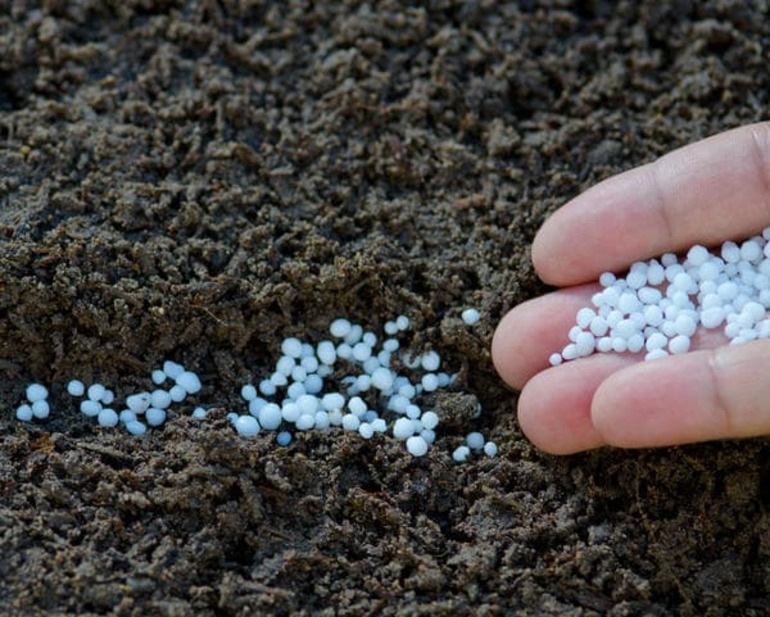
- humus or compost (8 kg);
- superphosphate (50 g);
- potassium nitrate (30 g).
The soil must settle, otherwise the root neck of the plant will not be deepened correctly.
In this period the earth is brought to the optimum state as follows:
- Acidic soil. Soil must be produced with burnt lime (400 g per m2) or add dolomite flour (500 per m2) into it. The top layer of the earth (40−45 cm) is removed and mixed with lime or flour, after which the soil returns to its original place.
- Heavy clay soil is diluted with chernozem, sand, compost.
- Sandy soil must be mixed with clay soil.
Wells for seedlings
Planting pits are prepared about 3 weeks before planting bushes. The prepared plot of land is leveled, and pits of suitable size are dug in the soil. Typically, the size is 40-50 cm in depth and 60 cm in diameter. When digging holes or grooves, it should be remembered that the root system of the currant grows over time to the size of its crown.
After the pit is ready, fertilizers are laid at its bottom:
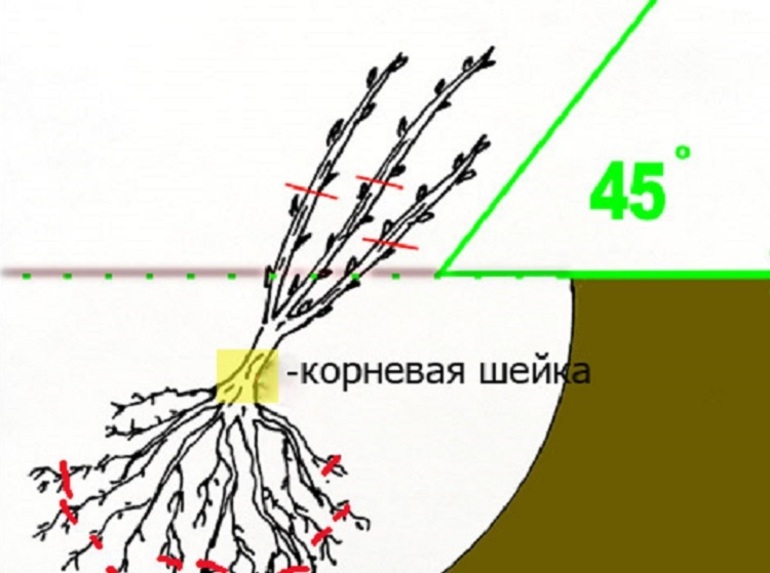
- humus (1 bucket);
- superphosphate (150 g);
- vermicompost (3 l);
- potassium sulfate (40 g);
- sifted wood ash (1 cup).
If the soil is poor, the amount of humus from compost or old manure increases to 2 buckets. A layer of fertilizer is sprinkled with earth, otherwise seedling roots can get burned. After this, the pit is left before planting.
Breeding methods
There are several currant breeding options. The simplest is just to buy ready-made seedling material. But no less often resort to cuttings or dividing the bush.
Cherenkov method
Held at a time when autumn entered the time of leaf fall, after about October 15:
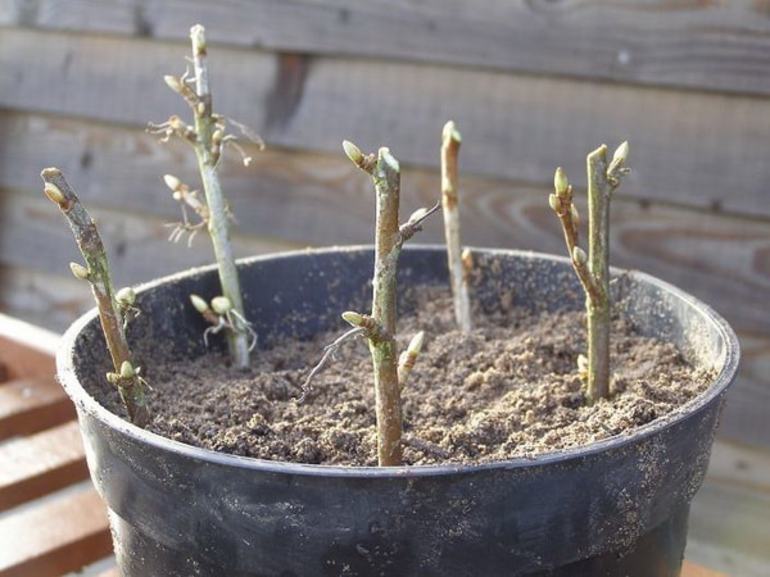
- At an adult bush of your choice, cut off an annual root shoot of at least 7 mm thick.
- From the bottom of the shoot, select a kidney and make an oblique (45 °) section behind it. Mark 20–25 cm of the shank and cut about 2 cm above the kidney. In the same way, the whole shoot is cut into cuttings, the bottom cut is always oblique.
- Cuttings should be as thick as a pencil, thinner ones take root worse.
- Insert the cuttings into the ground at an angle of 45 ° to “grab” as many buds as possible with the ground. Above the surface of the soil you need to leave only one kidney, pointing up. The distance between the cuttings is about 10 cm.
Division of the bush and the purchase of seedlings

Dividing a bush is the easiest way. You just need to separate the shoot with well-developed roots from the mother plant and plant in the usual way. More often this method is used if for any reason it is required currant transplant. She digs out all, so it’s convenient to choose the most healthy shoots.
It is better to buy a seedling not in a container, but with an open root system: it is easier to conduct an inspection. A plant with a closed root system can also be inspected. You need to pull it out of the container along with the soil. In a good seedling, the roots entangle around the entire earthen lump. In specialized nurseries, you can choose very high quality seedlings. It is only necessary to pay attention to the following parameters:
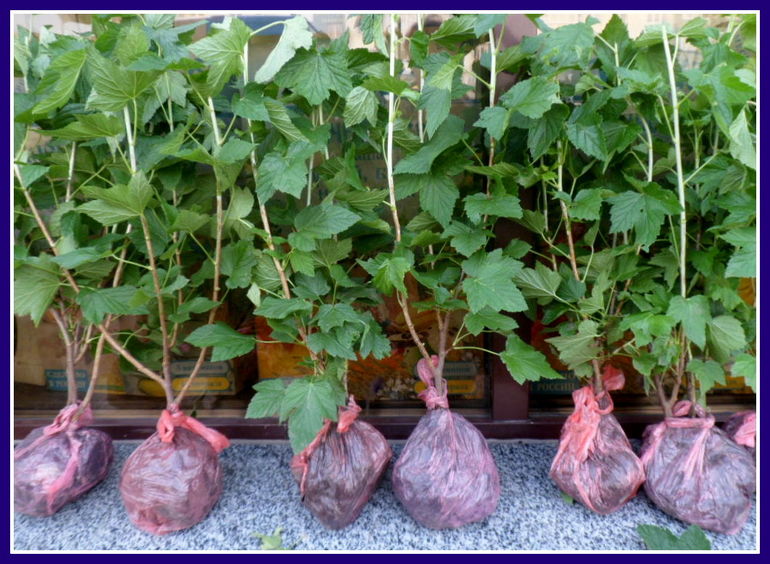
- The seedling should be 1 or 2 years old. Some experts believe that a two-year-old seedling is the best option. Others claim that the one-year-old takes root more quickly, as it has more fibrous roots through which nutrients are better absorbed.
- The root system must be well formed. The root is supposed to be sufficiently woody, not very hairy. The optimal root length is 15−20 cm.
- The seedling should have 1, 2 or more semi-lignified shoots, no shorter than 20-30 cm.
- The general appearance of a quality seedling is healthy and attractive, without cuts or broken roots.
The roots of the purchased plants need to be wrapped with a damp cloth and placed in a plastic bag. You need to carry a package with a seedling in an upright position. It is advisable to buy plants 1-3 days before planting. If this time has not yet come, then their roots can be dipped in a clay solution and stored in soaked, soaked in water, sawdust. It is necessary to ensure that the roots do not dry out.
Proper planting
Before planting, it is advisable to disinfect the roots. To do this, they need to be soaked for 2-3 hours in a solution of the drug Fitosporin. The procedure for landing:
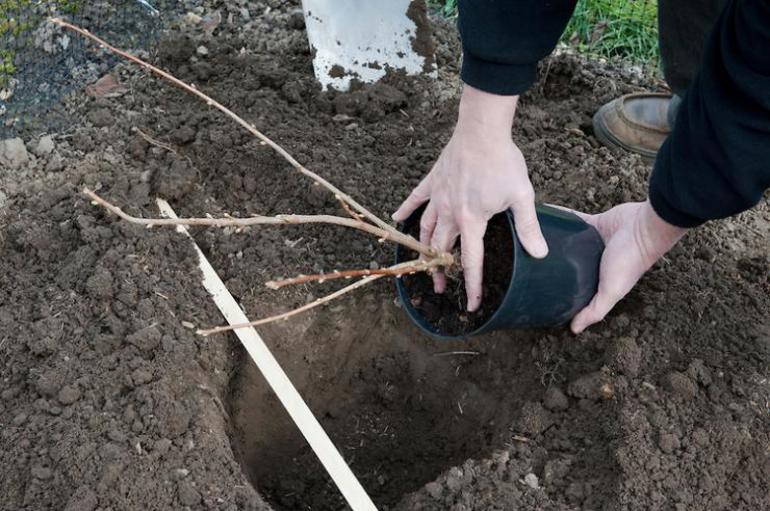
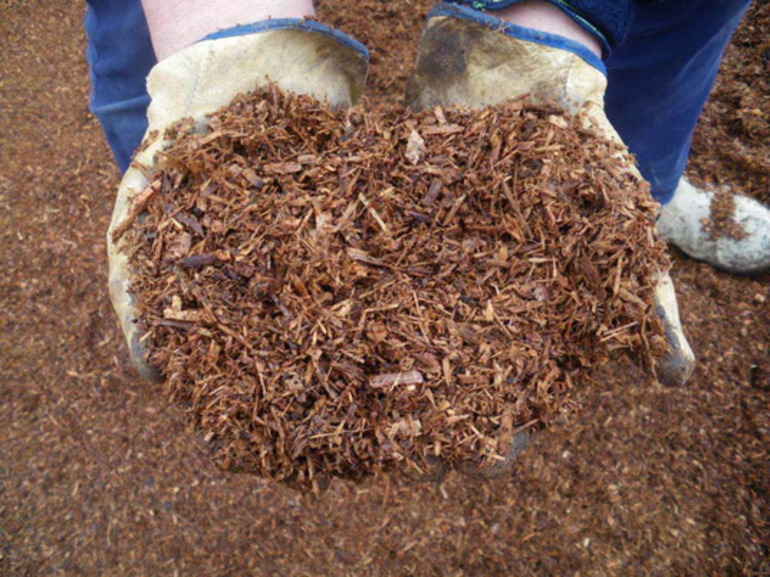
- Currants are planted in the planting pit at an angle of approximately 45 °. As in the case of cuttings, this will allow the plant to give a greater number of vertical shoots.
- The root neck is deepened by 5-6 cm.
- The roots need to be straightened, making sure that they do not come into contact with fertilizers. You need to pay attention to the fact that voids do not form between the roots - shake the bush lightly in time.
- Cover up with earth and tamp.
- Crop plant up to 30-40 cm, leaving at least three kidneys on the surface.
- Around the planted bush, make a shallow groove, where to pour 1-1.5 buckets of water. After the water is absorbed, fill the groove with earth.
- Mulch the soil with peat, straw, leaves with a layer of 10 cm. Mulch will protect the young plant from excess moisture and temperature extremes.
If a group planting is made, then the distance between the bushes of blackcurrant should be 1.5−2 m. Planting of different varieties will increase productivity, but then the distance between blackcurrant and red or white should be at least 5 m.
Depending on the region for the winter, a young plant is covered with spruce branches or cover material with a spanbond. Particularly carefully, the plant should take refuge in regions with little snowy winters. If you know how to plant currants in the fall, then you can confidently count on long fruiting. Currants will take root well, as foliage growth will not weaken the roots. And next spring it will begin to grow rapidly and give the first crop of beautiful, large, tasty and very healthy berries.

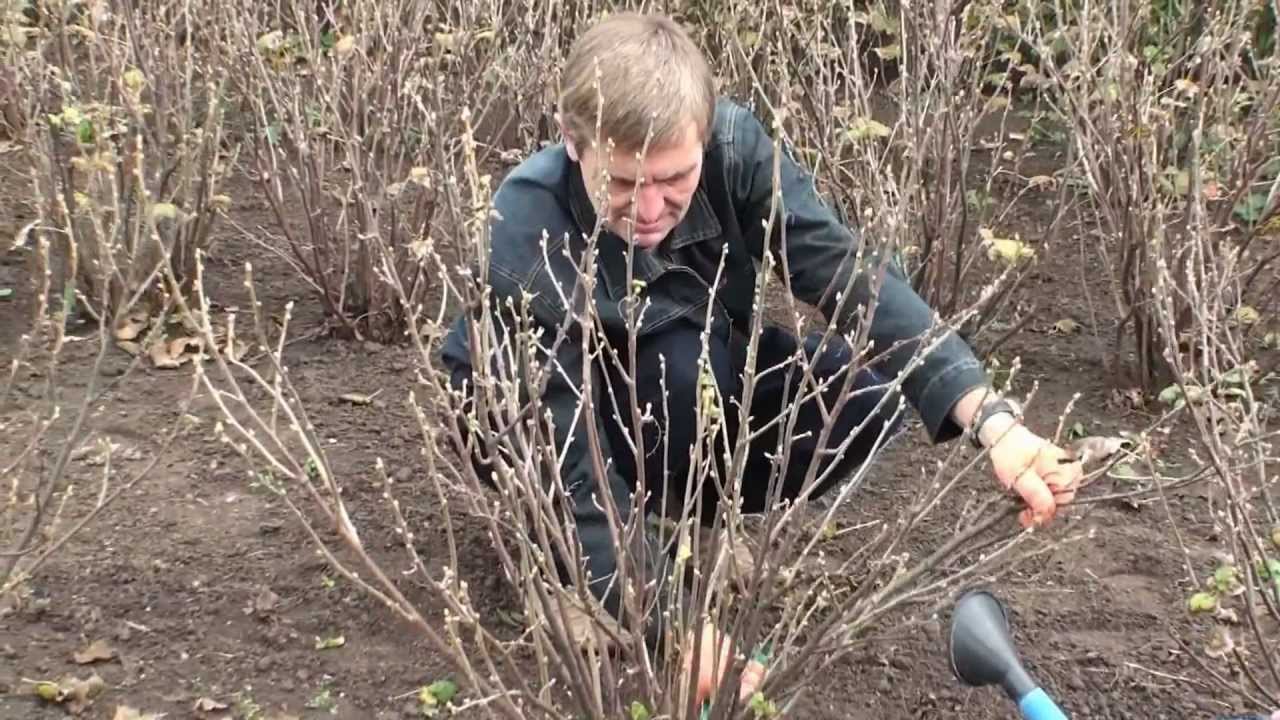 Autumn currant pruning scheme for beginners
Autumn currant pruning scheme for beginners Currant care in autumn and preparation of bushes for winter
Currant care in autumn and preparation of bushes for winter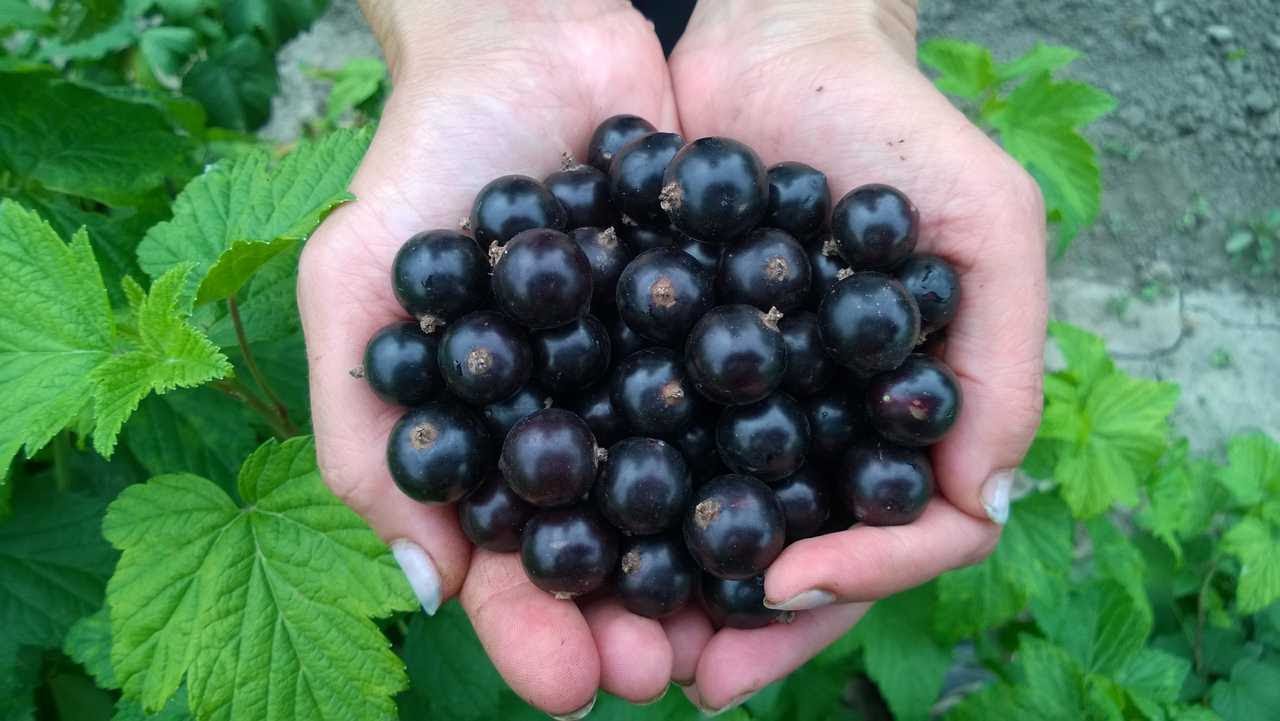 It's time to feed the currants - the best feeding
It's time to feed the currants - the best feeding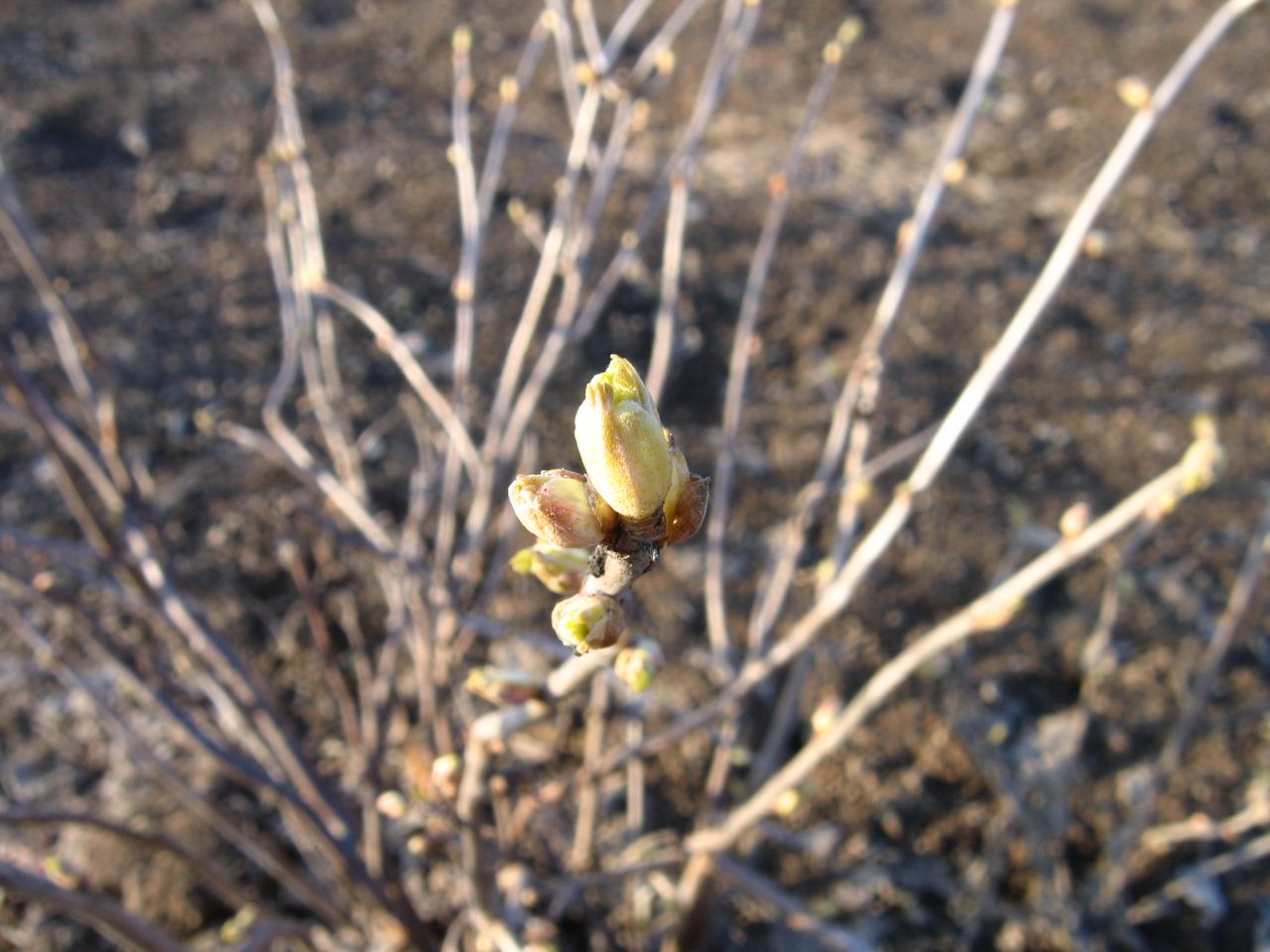 Spring treatment of currants from pests and diseases
Spring treatment of currants from pests and diseases